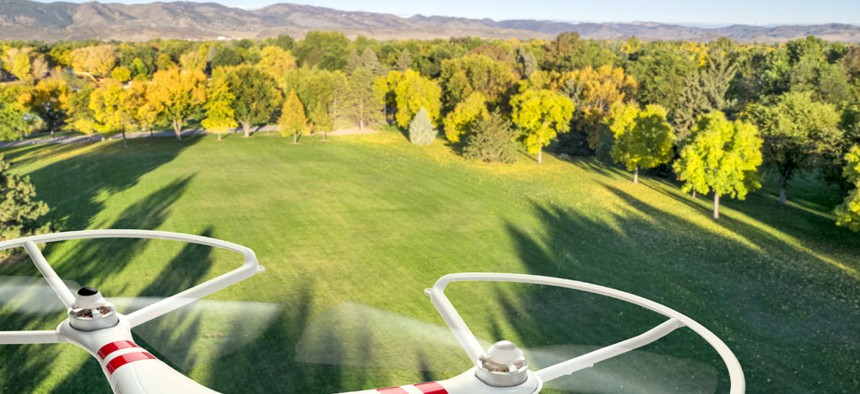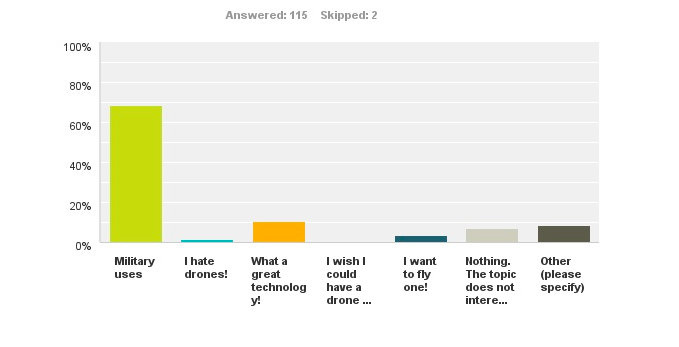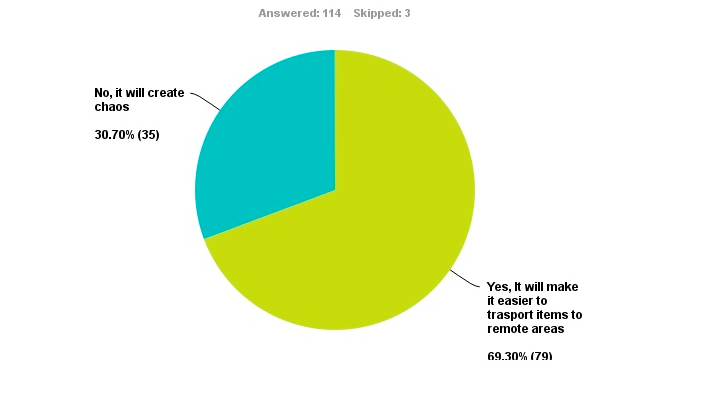NASA Develops Biodegradable Drones

marekuliasz/Shutterstock.com
This biodegradable vehicle, developed to protect sensitive ecosystems, invited a closer look at the positive uses of drone technology.
Drones are, largely, military tools—hardened, efficient machines of war. They're sturdy, not fuzzy. Strong, not brittle. And they should definitely not start breaking down upon impact.
But breaking down is exactly what the bio-drone is supposed to do. Created—or rather, grown— by a team of 15 students from Stanford University, Brown University, and Spelman College for the 2014 iGEM competition , the biodegradable drone is made mostly of fibrous mycelium, a root-like material found in fungi. The lightweight and sustainable substance is then coated with a sheet of sticky bacteria-grown cellulose, while the circuits inside the drone are printed using silver nanoparticle ink.
These biodegradable parts together help the drone naturally decompose—a feature that struck me ( and others ) as useful for the military: If a drone doing surveillance or spying crashes, for example, it could decompose before an enemy could find it. But for all the military applications people sprang to, it turns out that this drone wasn't designed with the military in mind. And making it work as a secretive, trace-free drone would be difficult.
For the biodegradable nature of the bio-drone to be useful to the military, the vehicle would need to decompose fairly quickly and leave little behind.According to Joseph Shih, a Stanford bioengineering lecturer and an advisor to the team, the current prototype would decompose slowly over a few months, though he says the team is working on developing an "active biodegradation system" that would make it do so in about four days.
But focusing on the speed of decomposing is beside the point, Lynn Rothschild, the lead scientist in synthetic biology at NASA's Ames Research Center and another team advisor, tells me, because that's not what they designed it for. "It had nothing to do with military implications," she says. "Once you say the word 'drone,' people do think of sinister connotations. But this is not why we're doing this."
Instead, the drones are meant to enter sensitive ecological areas, like coral reefs, to monitor and send back data without disrupting the ecosystem. The biodegradation, therefore, is for protecting the environment, not the drone—which means the team focused less on speeding up the decomposition, and more on building the drone out of the right materials.
Still, Rothschild says the team knew that creating a drone of any kind would raise red flags. In fact, she tells me one of her students approached her early on during the project to talk about the moral implications of building a device that could be used as a weapon.
That student, Jovita Byemerwa, says she had difficulty seeing drones having positive uses at first. "The topic of drones particularly concerned me," she wrote in email, "because I viewed their main uses as being oppressive and inhumane to defenseless people and societies."
Byemerwa's concerns actually sparked another research project that the team worked on alongside the actual drone: studying the word drone, and its connotations. To do so, they conducted a survey of 117 people , asking respondents what they associated with the word "drone."
What Comes to Your Mind First When You Think of Drones?

Most, like Byemerwa, thought of the military. The team then followed up by gauging respondents's views on civilian drones instead, asking them whether they thought such drones would help society:
Do You Think the Civilian Use of Drones Could Be Beneficial to Society?

Though most answered "yes," more than 30 percent of the respondents said drones would "create chaos"—which is why, Byemerwa says, the team put their focus on creating a biological drone for the environment. "Science can be dangerous," she tells me, "but when used for positive applications in society, it has a potential of making the world a better place."
The stigma surrounding drones is also why, Rothschild says, further research into the public perception of drones is necessary. If people have a better grasp of how drones are used, the capabilities of scientific drones can then be applied harmlessly to military drones. For example, the team could eventually develop bio-drones attached with bags of enzymes that would release after a crash, helping them decompose within hours. Without the stigma, a drone like that would protect the ecosystem and assist the military without calling to mind that uneasy, "sinister" connotation associated with the technology. But until then, the biodegradable drone is a logical solution to minimizing the environmental impact of the vehicles—even if it remains easily associated with military uses.
( Image via marekuliasz / Shutterstock.com )
NEXT STORY: Facebook Wants to Launch ‘At Work’ Version


